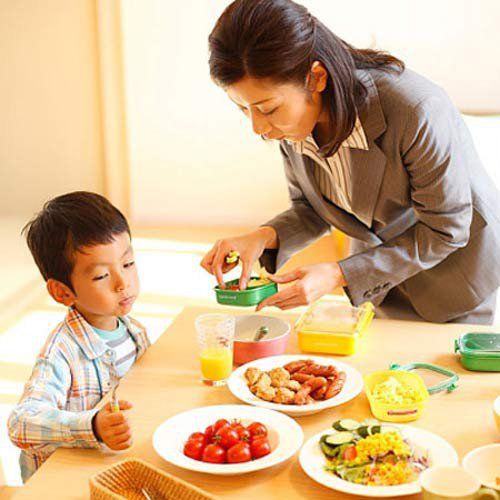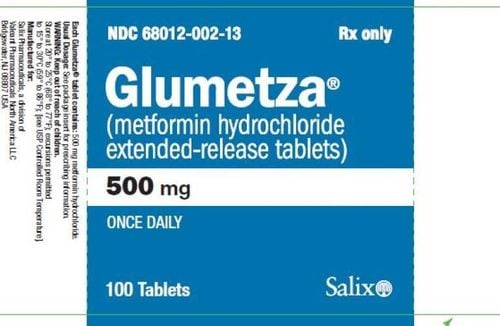This is an automatically translated article.
The feeding of severely malnourished children needs to be carried out by parents early. The "golden time" to nurture a baby is about 1000 days from when the baby is still a fetus until it is 2 years old. Your baby will have the best potential for physical development in the future if he is well and properly nourished during this time.
1. Principles in feeding severely malnourished children
Before learning about the principles to note in the diet when raising severely malnourished children (also known as level 3 malnutrition), we need to properly understand what malnutrition and malnutrition are heavy .
Malnutrition is defined as a condition in which a child stops growing due to a lack of energy proteins as well as essential micronutrients. There are usually 3 classifications as follows:
World Health Organization classification (WHO - 1981) Waterlow classification (1976) Welcome classification (1970). Malnutrition is common in children under 5 years old and is especially common in children aged 6-24 months. Malnutrition is often accompanied by a child's susceptibility to certain types of infections, and conversely, infections make malnutrition worse.
The WHO classification of malnutrition (1981) is the most commonly used worldwide today. The WHO recommends malnourishment when the weight of children over the age of less than 2 standard deviations (-2 SD) compared with the National Center for Health Statistics (NCHS) reference population in the US. From below - 2 SD to - 3 SD is mild malnutrition (grade 1), from below - 3 SD to - 4 SD is moderate malnutrition (grade 2), from below - 4 SD is severe malnutrition ( degree 3). 1 SD is equivalent to 10% of your baby's weight.
There are many causes of level 3 malnutrition such as poor eating, digestive disorders or the result of bacterial infections. Regardless of the cause, the consequences also make the child lack of energy and essential nutrients, making the child not gain weight, increase height and reduce intelligence. Not only that, malnutrition also leaves unpredictable consequences later on for children. In order to improve the nutritional status of children, mothers need to pay attention to the diet and thoroughly treat the diseases the children have.
Important principles to keep in mind when building a diet for severely malnourished children is to increase energy and nutrients, specifically:
Feeding children enough meals: Giving children enough meals can based on the rule of dividing into several meals. In the first few days, feed your baby every 2 hours to help him get used to different foods. It is advisable to maintain the child on solid foods to absorb better quality nutrients. Increasing dietary energy: One of the principles of feeding severely malnourished children is to give children a variety of meals in a meal, a variety of meals and a full range of substances, including protein, sugar, fat, and vitamins. and micronutrients. Every day, the diet for malnourished children needs to allocate healthy nutrition groups in all 3 main meals and snacks. Try to limit foods that are high in sugar and fat, and make sure your baby eats enough fruits, vegetables, lean meats and dairy products every day. In the diet for severely malnourished children, mothers should not be too strict with foods if the children are not allergic or have any problems with that food. In addition, parents also need to pay attention to adjusting children's behavior when eating:
Let children focus entirely on meals, do not watch TV or use smartphones. Limit each meal to no more than 30 minutes, children should not go out to eat. Do not let your baby eat or drink sweets between meals (only water should be given to him). Encourage the baby to pick, pick, and pick up food by himself, this helps stimulate the feeling of discovery, makes the baby eat well and can self-evaluate the foods he likes. Applying the above rules to your baby's diet as well as incorporating behavior modification for malnourished children in meals will contribute to improving health status and helping children quickly catch up with growth.

Nguyên tắc nuôi trẻ suy dinh dưỡng nặng đó là cho trẻ ăn nhiều món trong một bữa
2. Diet for severely malnourished children
In case the child is severely malnourished, it is necessary to take the child to the hospital for treatment and prevention of some complications such as: hypoglycemia, hypothermia, electrolyte disturbances, heart damage and very rapid death along with severe malnutrition. with other infectious complications.... Nutritionists found that timely and reasonable nutritional therapy has a good effect in preventing these complications.
Principles of feeding severely malnourished children include:
Eat many meals a day, in the first days, children should be fed every 2 hours. Eat from thin to thick and eat from little to more. Eat gradually increasing calories (from 75 - 100 - 150 - 200 kcal per 1 kg). Stable children will stay at 120 kcal/kg/day. It was found that at 100 kcal/kg body weight/day, the child's weight did not increase or did not increase significantly. But with 200 kcal/kg, malnourished children with grade 3 will have the maximum weight gain, to catch up with the "catch - up growth" growth, that is, gain about 70 g/kg/week, or This is called “compensated growth.”
When protein requirements are satisfied, energy is the decisive factor in weight gain in nutritional recovery in severely malnourished children. 2 - 3 - 4 - 5 g/kg) Stable children maintain at 3g/kg Most of the child nutrition experts believe that in the treatment of severely malnourished children, protein supplementation in small amounts The amount is too large is not necessary, but it is necessary to use proteins with high biological value (such as protein of eggs, milk, meat, fish...).Protein is increased from 1 - 2 - 3g and then increased gradually. maximum is 4-5g/kg/day Protein for 4-5g/kg and energy level of 150-200kcal/kg/day are satisfied for the “compensatory growth” of severely malnourished children
If sick Severely malnourished patients who eat by mouth cannot meet their needs, they should be fed with butter m through a catheter or gastric drip.
Commonly used foods for severely malnourished children include:
Use milk with added oil and sugar or other foods with high energy density and ensure to reach 1 kcal / 1 ml of food. In nursing children: In addition to breast milk, children should eat more milk - oil - sugar meals. In children with complementary foods: In addition to breast milk and milk - oil - sugar meals, cereals cooked with meat, fish, eggs (changed) + vegetables + oil should be added. In addition, it is recommended that your child drink more fresh fruit juices. For children over 12 months of age, it is necessary to combine high-energy milk meals with solid foods such as porridge or rice with added oil. From the 3rd week, in addition to milk, children can eat more flour, porridge to gradually replace milk meals and then gradually switch to a normal diet. Some children when eating cow's milk have digestive disorders because of lactose intolerance or cow's milk protein, on the other hand cow's milk is one of the quite expensive foods, so children who can't eat cow's milk or Children from difficult families can use soy milk to supplement their children's milk instead of cow's milk.

Trẻ suy dinh dưỡng nặng nên uống thêm các loại nước quả tươi
In addition, children with severe malnutrition are often accompanied by dehydration and electrolytes, so it is necessary to pay attention to supplementing water and electrolytes for children:
Mild and moderate dehydration, give oresol solution 50-100 ml/kg body weight. severe in 4-6 hours, drink a little less, if the child has improved maintain at 100 ml/kg. If it is not possible to give 1 dose as initially, closely monitor the child so that timely measures can be taken to avoid severe dehydration Severe dehydration: The child is severely dehydrated and shows signs of lethargy, unable to drink or If vomiting is severe, a dose of 70 ml/kg should be infused intravenously in the first 3 hours with ringer lactate solution. When the child is better and able to drink, it is given to drink instead of intravenous infusion. Malnourished children are often accompanied by other infections, which should be detected early, treated promptly with antibiotics as directed by the doctor, maintained body hygiene as well as taking care of the skin, eyes, ears and ears. oral teeth.
It should be noted that malnourished children are not given iron in the early stages, but only supplemented with this micronutrient when children enter the stage of starting to gain weight.
Severe malnutrition is a serious medical condition that affects a child's normal development and has serious consequences later on. The lack of knowledge of mothers in raising children, introducing solid foods or weaning too early are the main causes of severe malnutrition in children.
Diet for severely malnourished children is generally still based on the principle of fully supplementing 4 groups of nutrients as well as vitamins and minerals, in addition, it is also necessary to pay attention to rehydration in case of dehydration and treatment. associated infections.
Besides, to prevent this, your baby needs to add the necessary micronutrients: Zinc, selenium, chromium, Vitamins B1 and B6, Ginger, acerola fruit extract (vitamin C), ... to improve taste, eat well, reach the correct height and weight, and exceed the standard, have a good immune system, strengthen the resistance to get sick less often and have less digestive problems.
The improvement of symptoms can take place for a long time, so it is recommended that parents be calm and persistent when supplementing with nutrients for children, even through eating or functional foods. In particular, the use of functional foods should choose those of natural origin that are easily absorbed, do not allow simultaneous use of many types or continuously change the types of functional foods.
For more nutritional knowledge and child care for each age, parents should regularly visit the website vimec.com and make an appointment with the leading doctors, pediatric and nutrition experts of the National General Hospital. Vinmec when needing advice on children's health.













